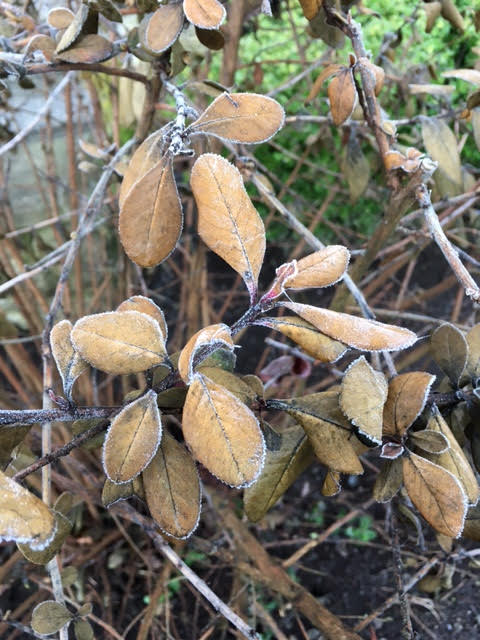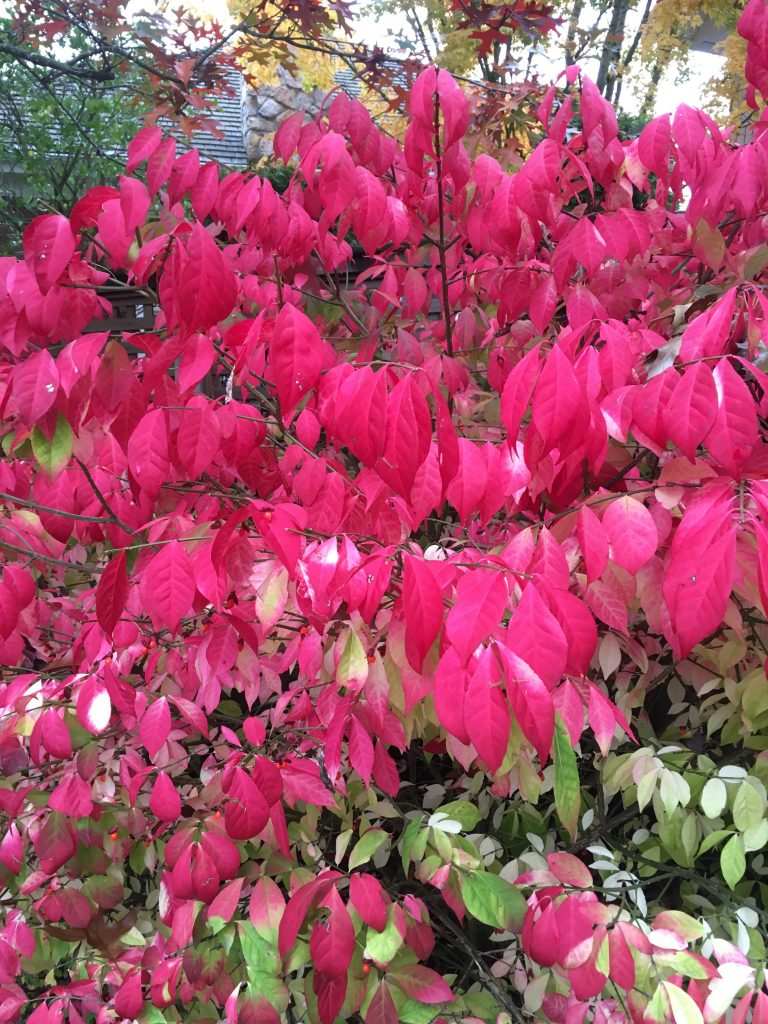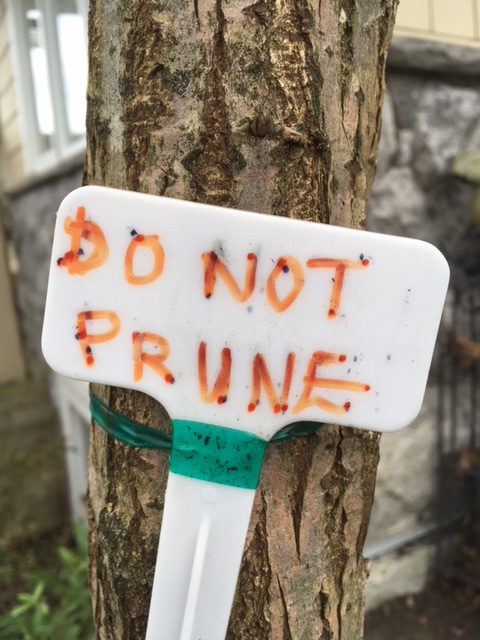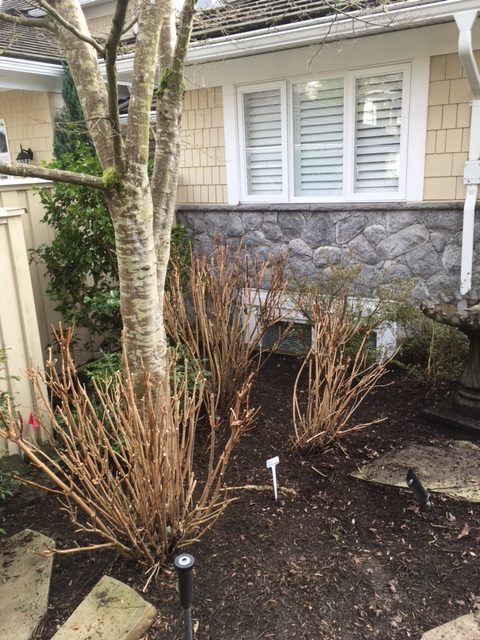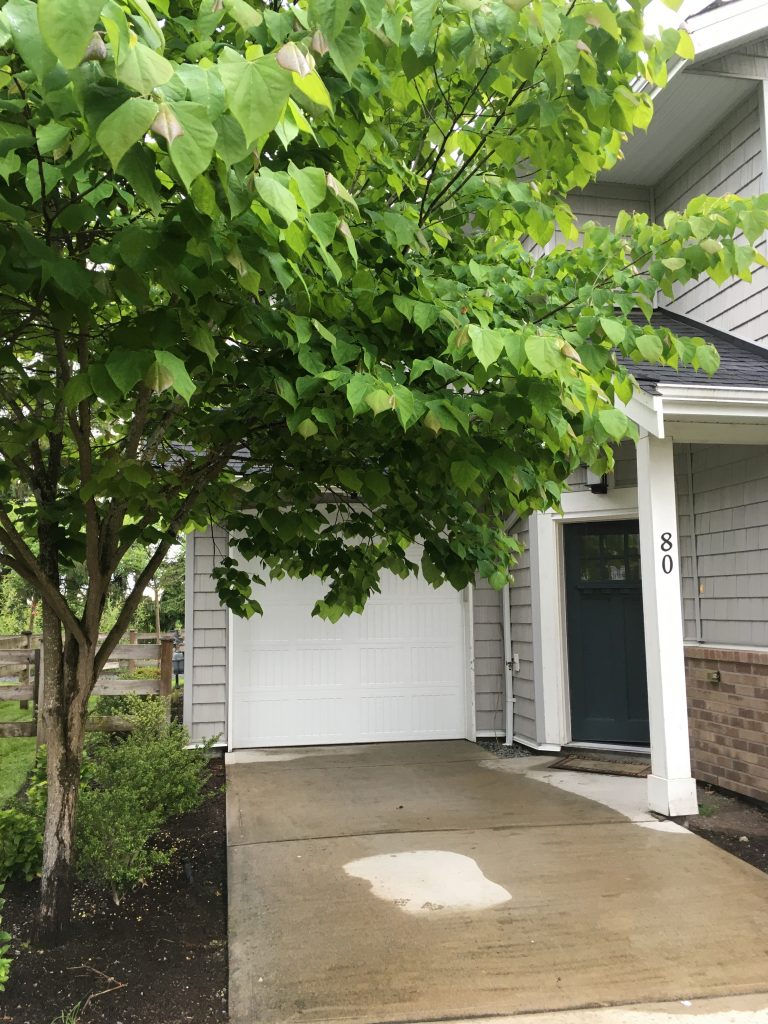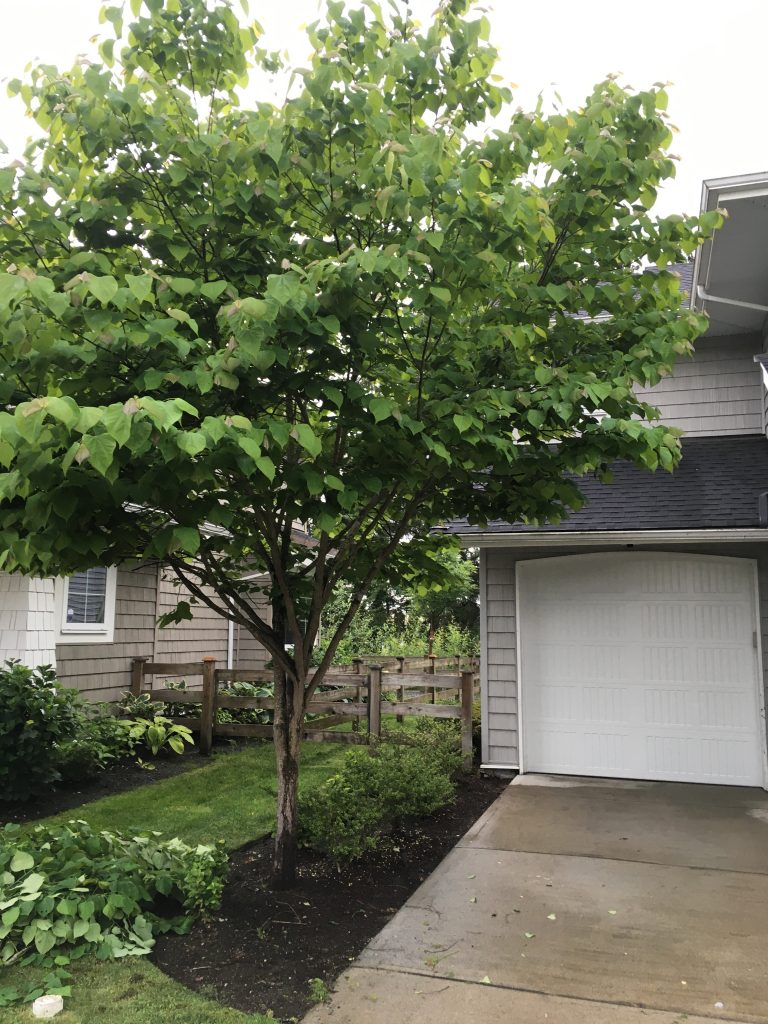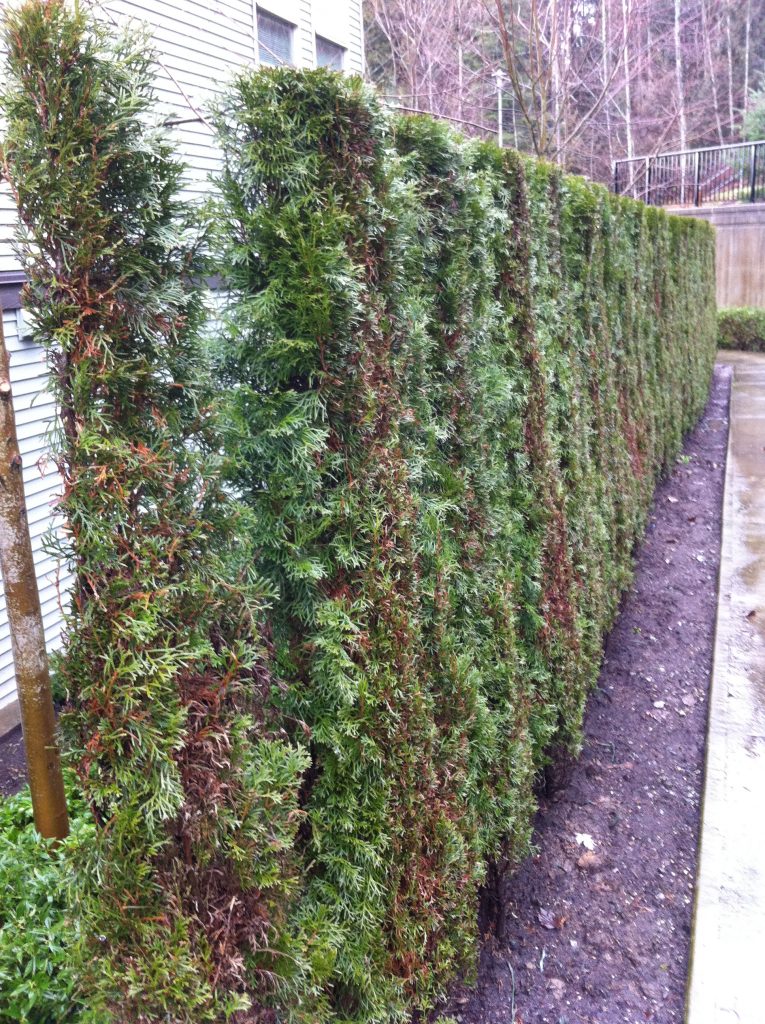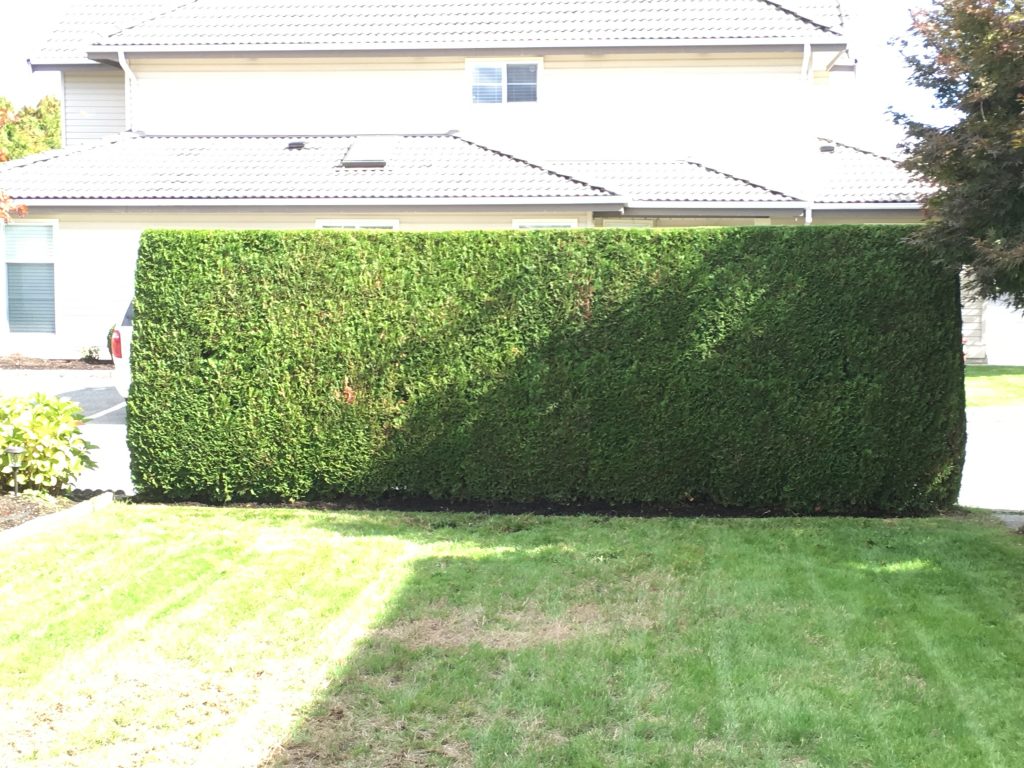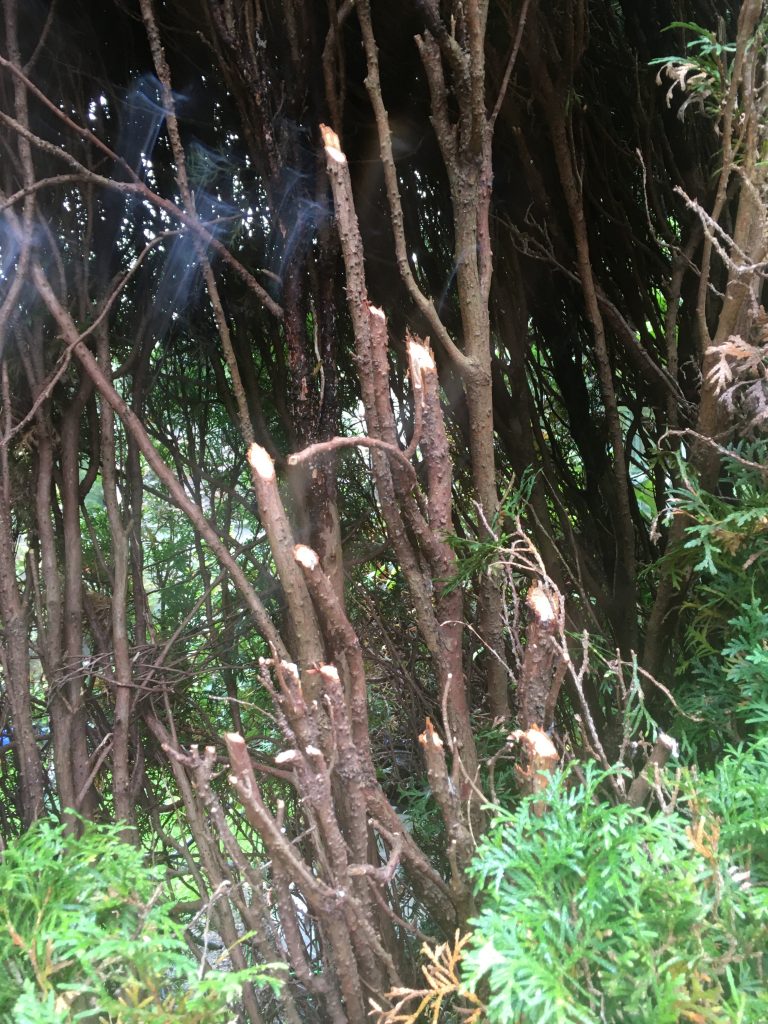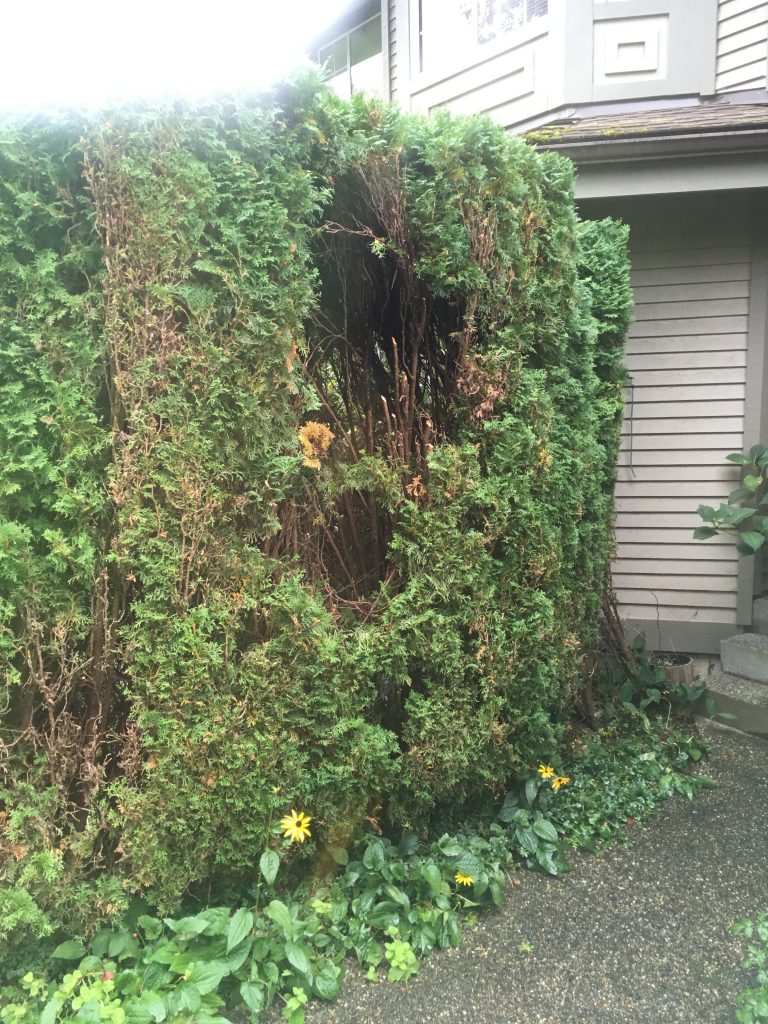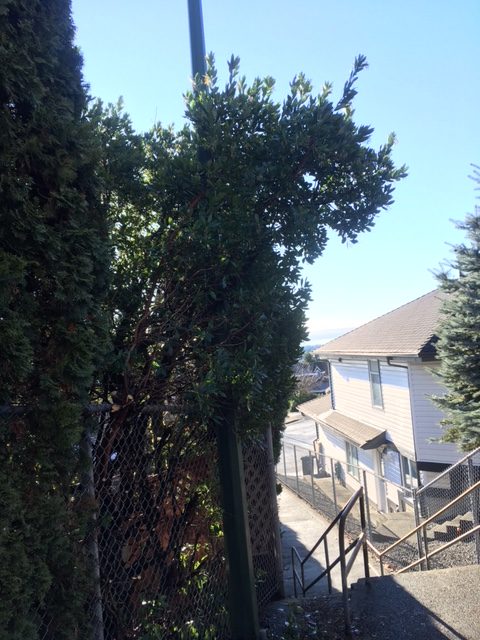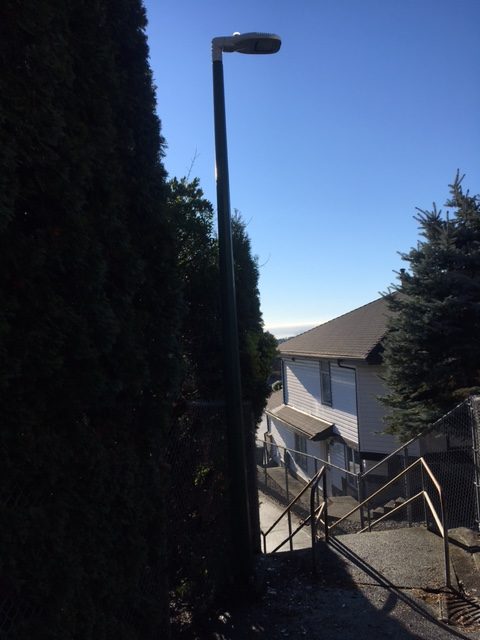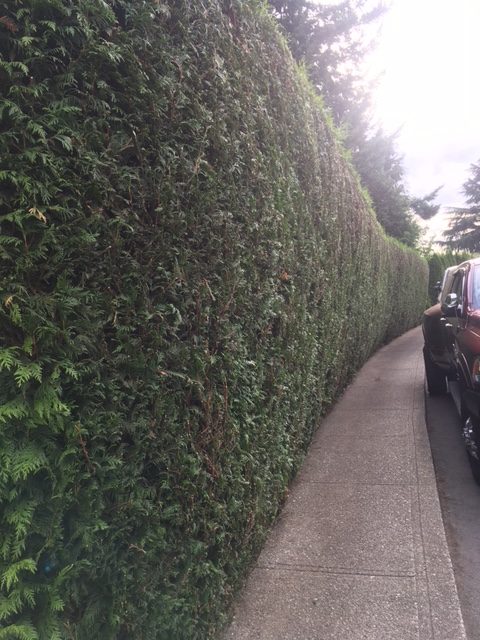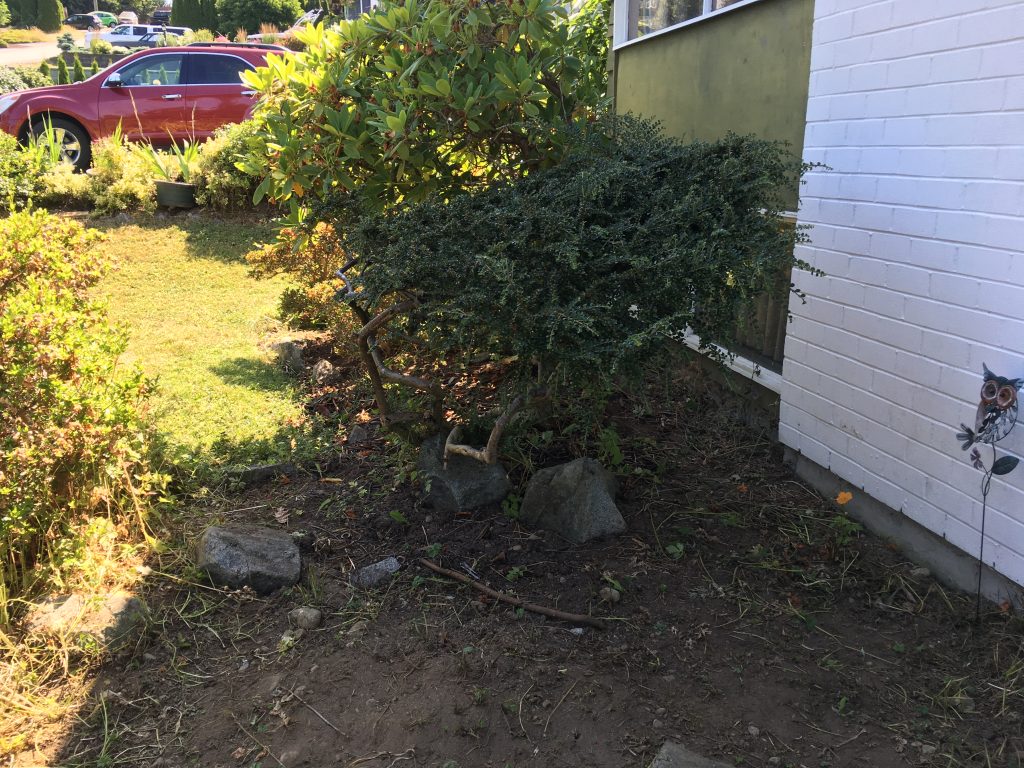Sheared rhododendrons
This isn’t the first time I have written about power-sheared rhododendrons. Please see my blog post on a Rhododendron massacre.
In large scale commercial landscaping work, there isn’t enough time for hand snipping. So, when several larger specimens need to be pruned, out come the power shears. Unfortunately, the result isn’t pretty. A woody plant like a rhododendron isn’t really made for power-shearing. It makes me cringe every time.
Recently, I found one of these abused rhododendrons in a corner; it was easily accessible and I had time to do some corrections by hand. That’s what rhododendron rebels do when they’re working alone. It felt like a rescue and therapy all in one.
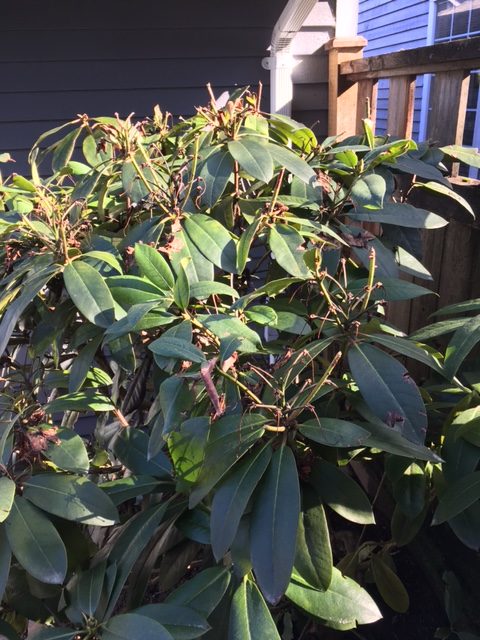
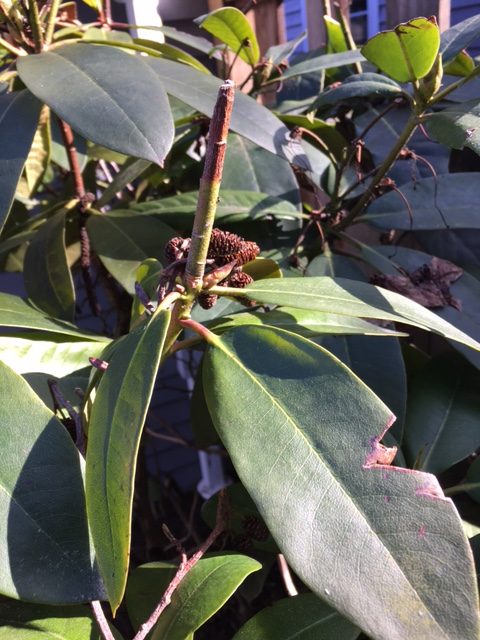
The tall stubs and shredded leaf margins are clear evidence of past power shearing and they don’t look great.
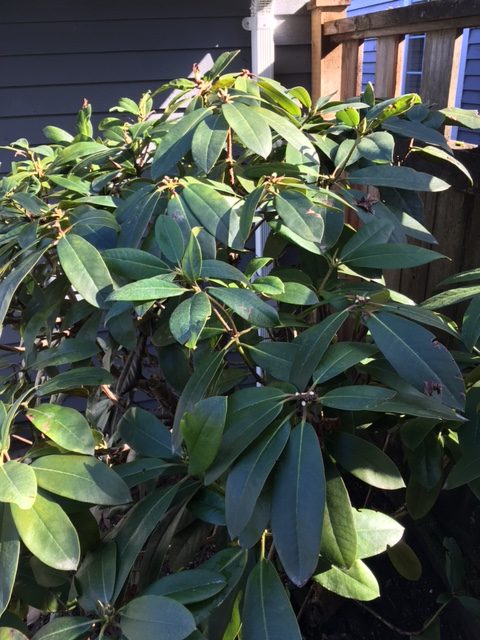
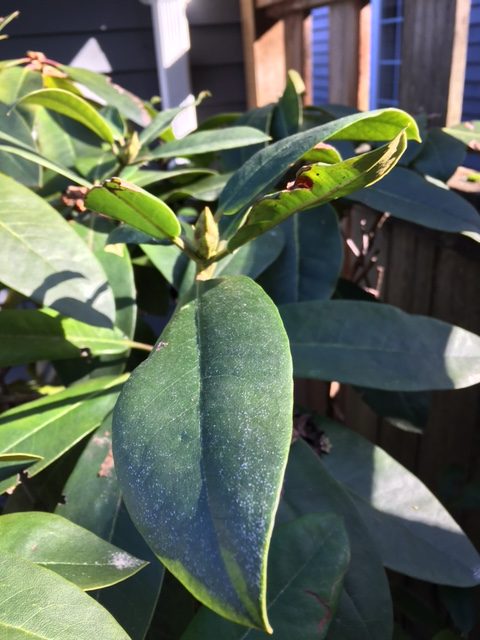
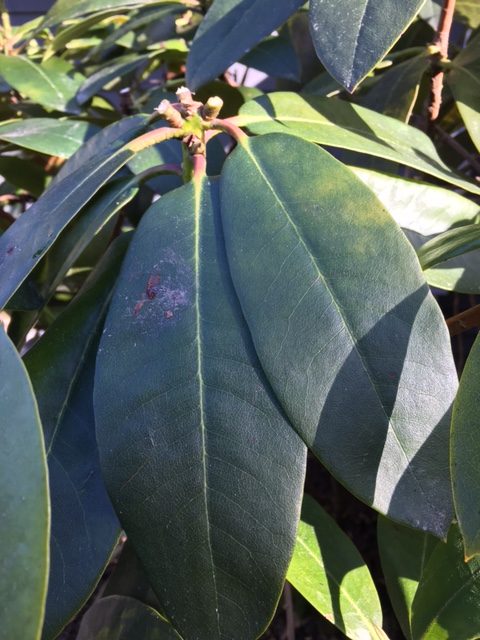
Corrections
I hand snipped out the tall stubs carefully so as not to damage any buds. I also pinched off the spent flowers, which is another task there often isn’t enough time for. This is especially true with bigger specimens.
Note that pinching off the flowers means the plant won’t waste energy on seed production.
I couldn’t do much about the shredded leaves.
Beauty!
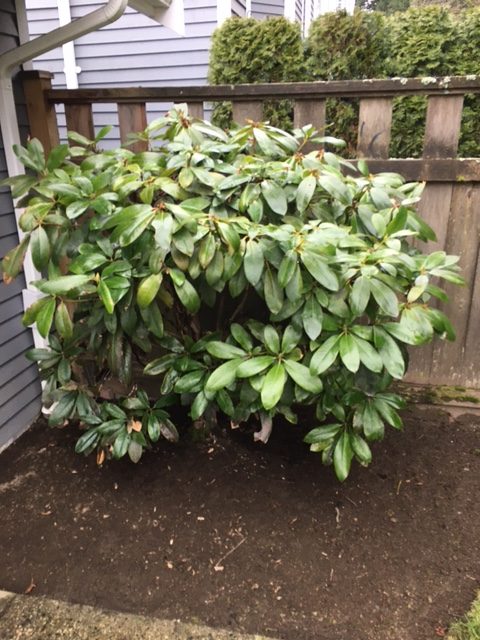
This is much better. All of the stubs and spent flowers are gone and it didn’t take very long. You can easily get away with work like this in late winter, before lawn care starts. Especially on a smaller and easily accessible specimen like this.
Judging from the spent flowers I found, this rhododendron flowers nicely.
Conclusion
If you can, avoid power-shearing rhododendrons. It leaves behind shredded stems and foliage, which look awful. Instead use your hand snips and enjoy your time in the garden. You’ll be rewarded when your rhododendron flowers nicely.



